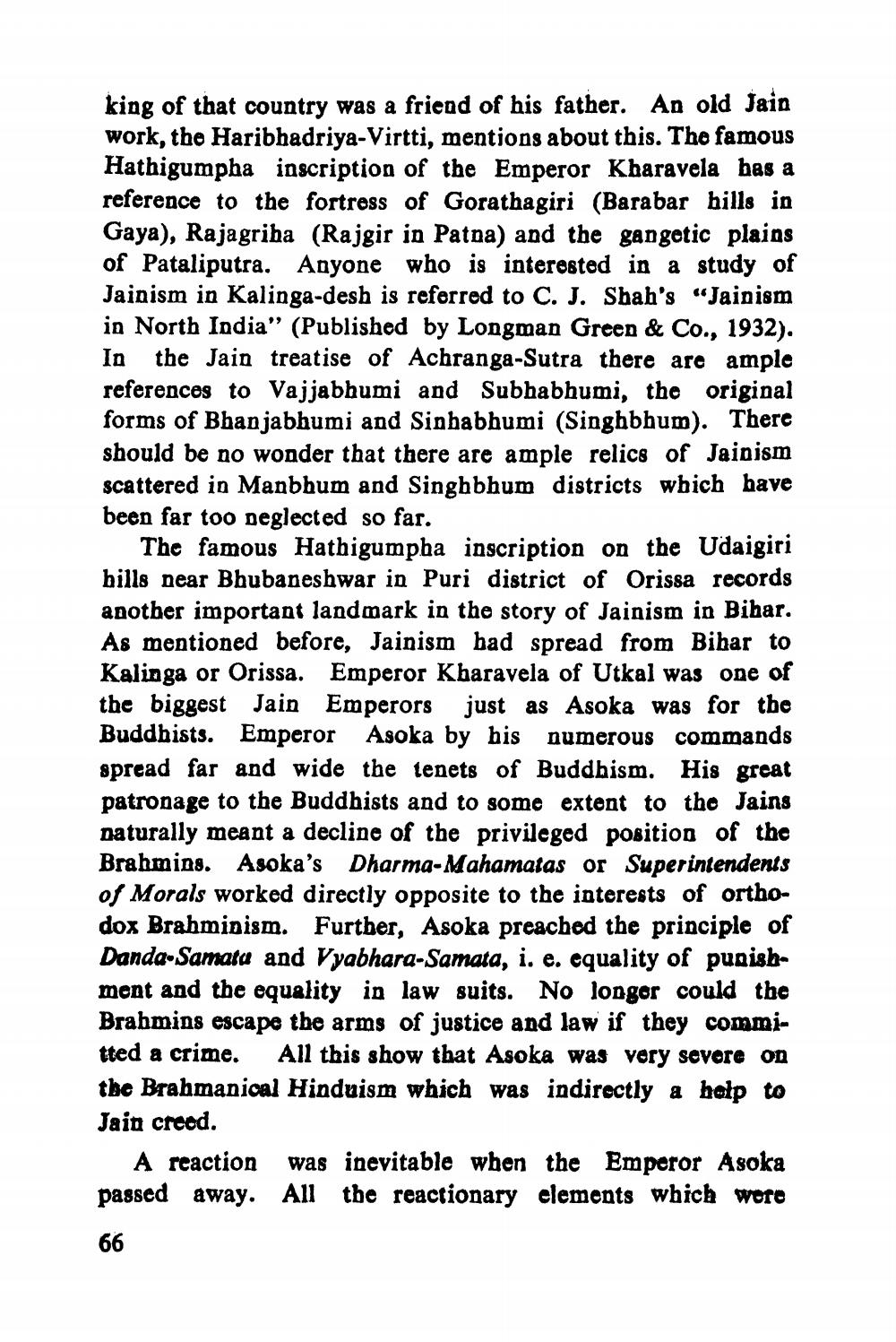________________
king of that country was a friend of his father. An old Jain work, the Haribhadriya-Virtti, mentions about this. The famous Hathigumpha inscription of the Emperor Kharavela has a reference to the fortress of Gorathagiri (Barabar hills in Gaya), Rajagriha (Rajgir in Patna) and the gangetic plains of Pataliputra. Anyone who is interested in a study of Jainism in Kalinga-desh is referred to C. J. Shah's “Jainism in North India" (Published by Longman Green & Co., 1932). In the Jain treatise of Achranga-Sutra there are ample references to Vajjabhumi and Subhabhumi, the original forms of Bhanjabhumi and Sinhabhumi (Singhbhum). There should be no wonder that there are ample relics of Jainism scattered in Manbhum and Singhbhum districts which have been far too neglected so far.
The famous Hathigumpha inscription on the Udaigiri bills near Bhubaneshwar in Puri district of Orissa records another important landmark in the story of Jainism in Bihar. As mentioned before, Jainism bad spread from Bihar to Kalinga or Orissa. Emperor Kharavela of Utkal was one of the biggest Jain Emperors just as Asoka was for the Buddhists. Emperor Asoka by his numerous commands spread far and wide the tenets of Buddhism. His great patronage to the Buddhists and to some extent to the Jains naturally meant a decline of the privileged position of the Brahmins. Asoka's Dharma-Mahamatas or Superintendents of Morals worked directly opposite to the interests of orthodox Brahminism. Further, Asoka preached the principle of Danda-Samata and Vyabhara-Samata, i. e. equality of punishment and the equality in law suits. No longer could the Brahmins escape the arms of justice and law if they committed a crime. All this show that Asoka was very severe on the Brahmanical Hinduism which was indirectly a help to Jain creed.
A reaction was inevitable when the Emperor Asoka passed away. All the reactionary elements which were
66




